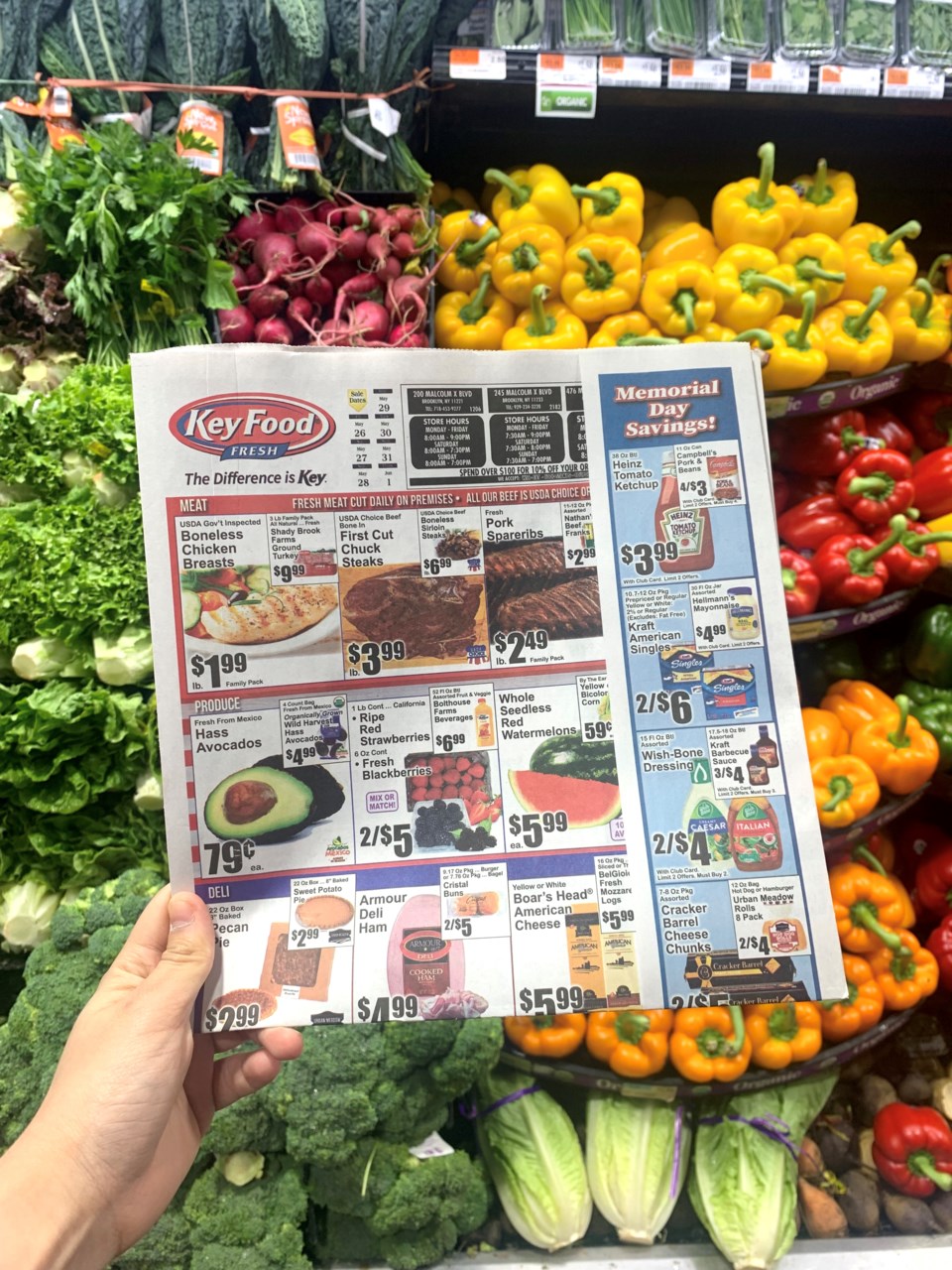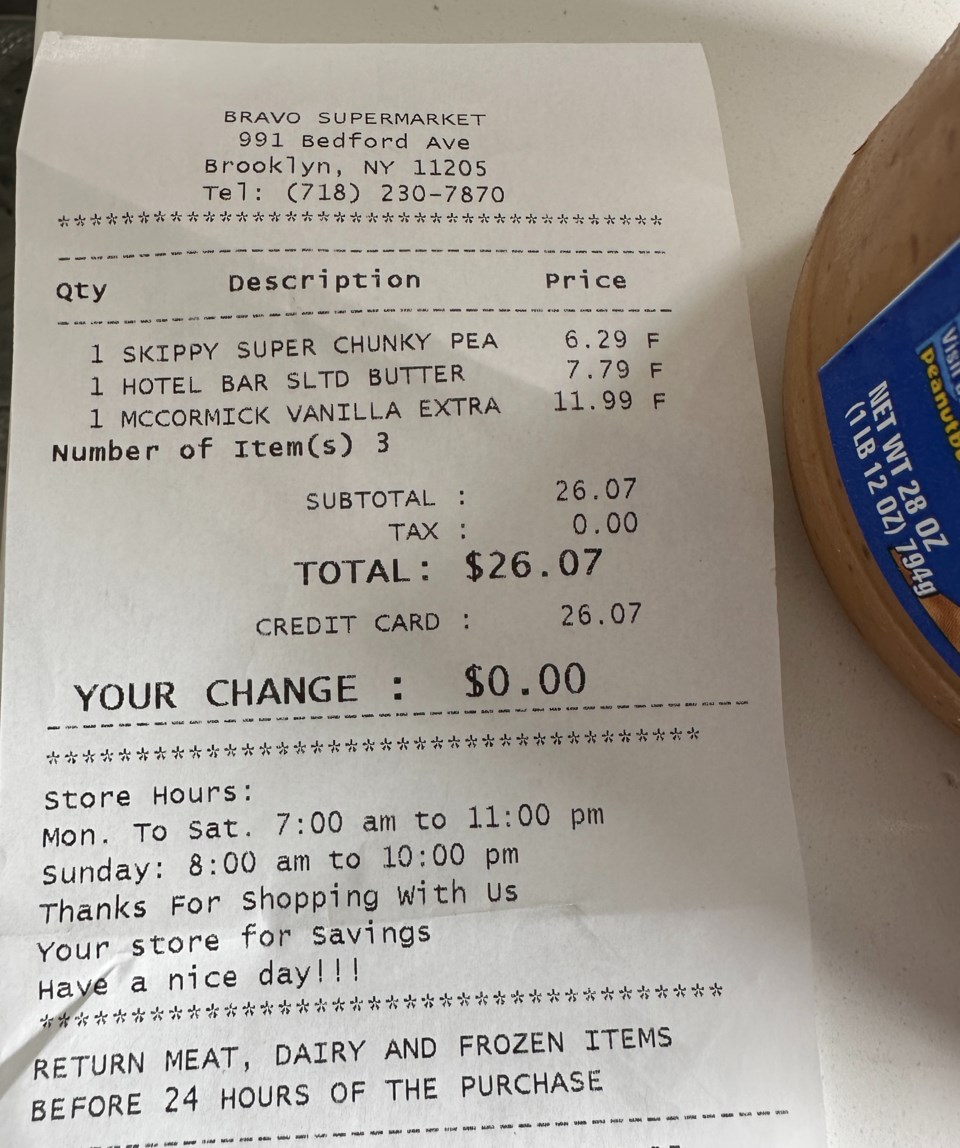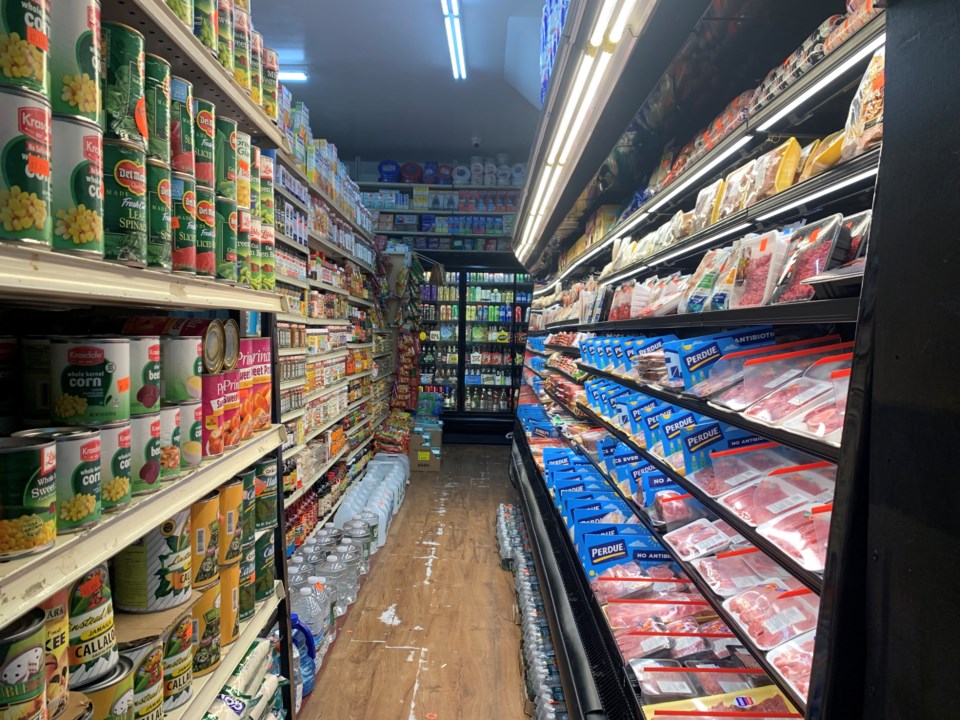A dollar for an onion. Eight dollars for a dozen of eggs. High food prices are now something Brooklyn shoppers simply have had to live with. So, BK Reader has learned, consumers have been forced to shop more strategically.
Marva, a Stop & Shop shopper, has a discount mailer in hand from the moment she entered the store: “With the coupons, the pricing is much better, compared to a lot of other stores,” she said. Her tip is to circle the store to find all items on the discount sheet before looking at other products.

And Natasha Trim, a Brooklyn shopper, visits different grocery stores on her once-a-week shopping trip. She goes to Wholes Food to buy her vegetables and Stop & Shop for its selection of discounted items and salad mix. Similarly, Abdul and his partner, who recently moved to Brooklyn, go to big department stores for meats and small items like soaps, and their local corner store for vegetables and fruits.
Linda L. puts herself on a budget of $85 per trip, and looks at each item carefully before making her selection. BK Reader approached her while she was choosing between banana bundles. She shared that since food prices are so high, the locality of supermarkets no longer matters; she now hunts for stores offering the cheapest prices.
And Ally, a Brooklynite, said she shops with Amazon Fresh, an online grocery platform, because it saves her time.
Director of CUNY Urban Food Policy Nevin Cohen says that online shopping is a new way shoppers can save both time and money, a strategy that emerged out of the pandemic and one that families should utilize more: “The market is changing. And while physical grocery stores are still important, there are other ways that people can access food now,” he said.
However, although local Brooklynites slowly are adapting and showing their resilience in face of a tumultuous state of high food costs, one sentiment is clear: It shouldn’t be solely on shoppers to have to come up with creative ways to shop; they want the city and state officials to step in and address this issue of high food costs.
So, what has been done to address this issue on governmental levels?
Addressing the Problem from the Roots
On a federal level, many agencies, including the U.S. Department of Agriculture (USDA), the Department of Justice (DOJ), Federal Trade Commission (FTC), and the Environmental Protection Agency (EPA) among others, are taking action in response to the disrupted food supply chain and increased food prices.
The USDA is most hard at work. For example, together with the DOT, they helped decrease congestion at agriculture ports by establishing a system to allow suppliers to load cargos and move them out more efficiently.
They provided funding for meat and poultry processors to expand their operations, provided funding to school districts to help support school meals, while increasing Supplemental Nutrition Assistance Program (SNAP) benefits for low-income individuals. It’s worth noting that Brooklyn is the borough with the most people (34.79%) relying on SNAP, so this increase goes to many.
According to Secretary of Agriculture Tom Vilsack in a December 2022 interview, the USDA plans to focus on farmers to strengthen local and regional food systems:
“We learned during the pandemic that while our systems are incredibly efficient, it’s not as resilient as we needed it to be,” he said. “So we’re creating new market opportunity for farmers to sell locally to schools, restaurants, grocery stores.”
By tackling the challenges in the food system from the production step, the department plans to create a stronger system, thus slowing the price increase.
“The [inflation] rate is coming down,” Vilsack said, as food prices, though still historically high, are expected to grow more slowly compared to 2022, according to the latest USDA report.
On a state level, Governor Kathy Hochul recently signed-off on a new initiative called FreshConnect Fresh2You, where SNAP beneficiaries shop at participating farmers’ markets will receive $2 checks for every $2 spent as part of the SNAP program, up from $2 for every $5 spent.
“The new Fresh2You initiative will help ensure New Yorkers have more money to spend on healthy foods like dairy, meat, produce and more,” said Hochul in a statement announcing the program.
However, the solution neglects to include other NYers who are not part of the SNAP program and who are still feeling the pinch of the high food prices. The program, although a small achievement, acts only as a salve to the wound and fails address the core of the problem. The New York Department of Agriculture did not respond to BK Reader’s request for a comment on possible solutions for tackling the high food cost crisis.
On a city level, urban agriculture seems to be a solution Mayor Eric Adams is hinting at. He just appointed a new head of the Department of Agriculture, Qiana Mickie, whom he said will “play an integral role in advancing my food and sustainability agenda.”
Mickie was interviewed by BK Reader’s Elizabeth Lepro, where she shares her vision of a Brooklyn full of land stewards: “We have so many Black, brown and other folks of color that are land stewards who have been doing this for years — decades, even," said Mickie. "And we have some younger folks coming in who are excited-- desperate even-- to be land stewards. But they don’t just want to do it for fun; they don’t want to do it just for that one apple or that one tomato.”
Mickie has been connecting with nonprofits and farms around the city to spread the news, in hopes of creating conversation and helping guide New Yorkers who would like to grow but don’t yet know where to start.
So, for Brooklyn shoppers who wish to skip the grocery stores for a more sustainable approach to food, the city has a point person.
Small Businesses Are Adapting
With Brooklynites skipping local corner stores for bigger brands with deeper discounts, small grocers find themselves in a bind.

The pandemic changed the way people view grocery stores for the better, according to United Food & Commercial Workers International Union (UFCW) Local 1500 President Robert Newell, because during the vulnerable circumstances of a health crisis, they remained open to provide to their communities. But now, so much has changed for them as well.
“People often shop online these days,” said Guillerni Comore, owner of Chucky Fresh Market Corp. “So we’re also moving [online] to bring in more business.” His store, located on Utica Avenue, is planning to create a website for online ordering. In the meantime, consumers can call for grocery delivery. His store also opens much later, compared to other grocery stores, in an attempt to bring in late-night costumers who wish to shop without the hustle-bustle of the morning hours.
For CTown Supermarkets, Manager and Owner Al Keswani said securing a more locally focused selection of products is the way to get yourself a standing in the market. He carries selections of infant formula and medicine that “nobody have … in the neighborhood right now.” He showed BK Reader different infant formulas stacked away in his office. He says he relies on these premier selections to “keep the [customers] coming.”
The new food shopping reality is like what Nagib Ali, owner of Halsey Traders, said: Once prices go up, they never come down.
So, until systemic changes begin to take root, local Brooklynites, from shopper to grocers, are adapting, showing their resilience.
Go here to read part one of this series, which examines some of the reasons behind the skyrocketing price of food in Brooklyn.
This story was produced as part of the Small Business Reporting Fellowship, organized by the Center for Community Media and funded by the NYC Mayor's Office of Media and Entertainment.




